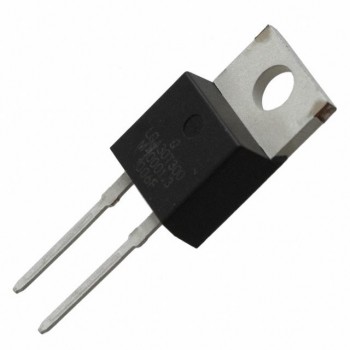As a hardware engineer, when designing a switching power supply, you need to pay attention to the selection of many components. As one of the basic components, diodes play an important role in the switching power supply. It can be used for rectification or freewheeling, and in different types of switching power supplies, the selection of diodes is also different. This article will summarize a few key points to note when selecting a diode.

First, we need to consider the forward conduction current. This is one of the important parameters of the diode, which determines how much current the diode can maintain normal life and function when it continues to flow for a long time. When selecting, you need to consider how much current the connected load requires, and then select a suitable diode that conducts forward current. For example, in a power supply with an output of two amps, if you choose a rectifier diode, it is recommended to choose a diode with a forward current of 3.5 amps to 4.5 amps to leave sufficient margin.
Secondly, the forward conduction voltage is also a parameter that needs attention. When the diode is conducting forward, there will be a certain forward conducting voltage. Generally speaking, the lower the forward conduction voltage, the better because it will result in smaller power consumption. When designing a power supply with an output of 3.3 volts, the voltage drop of the diode cannot be ignored, and it is necessary to ensure that the output voltage is not lower than 3.3 volts.
In addition, the maximum power of the diode also needs to be considered. During forward conduction, the diode will generate a certain amount of heat, and this part of the power will be dissipated into the diode package as heat. Therefore, the calculated power needs to be less than the maximum power of the diode to ensure that the diode will not be damaged by overheating. When selecting a diode, you need to select the appropriate diode based on the maximum power in the circuit to ensure that it can withstand the power demand in the circuit.
In addition, the reverse withstand voltage value is also a parameter that needs attention. In the circuit, the diode needs to be able to withstand a certain reverse voltage when working in reverse, otherwise breakdown will occur and cause damage. Therefore, when selecting a diode, you need to ensure that its reverse withstand voltage is greater than the maximum reverse voltage in the circuit.
Secondly, the maximum frequency of the diode is also a parameter that needs to be considered. In the design of switching power supply, the diode will perform frequent switching operations. If the selected diode frequency is lower than the switching frequency of the application, the diode will be overheated and damaged. Therefore, it is necessary to select a diode with a high enough frequency to ensure that it can work properly in the circuit.
Finally, the reverse leakage current of the diode also needs to be considered. In some delicate circuit designs, the leakage current may need to be taken into consideration. Therefore, when selecting a diode, the reverse leakage current needs to be considered based on specific circuit requirements.
In general, when selecting a diode, you need to consider several key parameters such as forward current, forward voltage, maximum power, reverse withstand voltage, maximum frequency and reverse leakage current to ensure that the selected diode can Meet the needs of the circuit and work stably and reliably.
If you need procurement, selection guidance, BOM ordering, etc., please contact us via the following email address:

